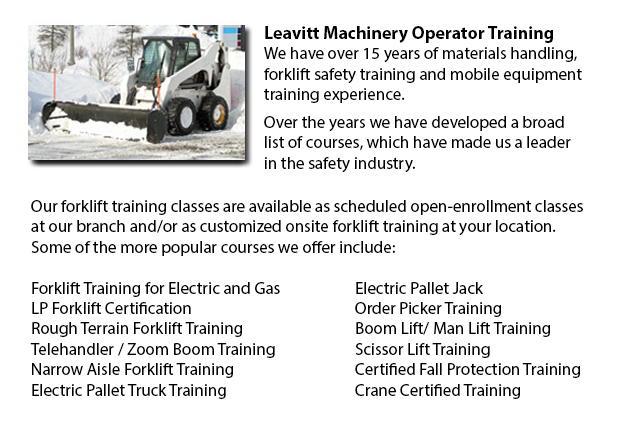
Skid Steer Ticket Ottawa - The lift arms on the skid-steer loader are placed next to the driver together with pivots at the back of the driver's shoulders. These features makes the skid-steer loader different as opposed to the conventional front loader. Due to the operator's proximity to moving booms, early skid loaders were not as safe as traditional front loaders, particularly through the operator's entry and exit. Today's' modern skid-steer loaders have various features to protect the driver like for instance fully-enclosed cabs. Similar to several front loaders, the skid-steer model can push materials from one location to another, is capable of loading material into a truck or trailer and could carry material in its bucket.
Operation
Generally a skid-steer loader could be utilized on a jobsite instead of a big excavator by digging a hole from the inside. To begin with, the skid-steer loader digs a ramp leading to the edge of the desired excavation, and afterward it makes use of the ramp to be able to excavate material out of the hole. As the excavation deepens, the machinery reshapes the ramp making it longer and steeper. This is a very functional technique for digging beneath a structure where there is not adequate overhead clearance for the boom of a large excavator. For instance, this is a common scenario when digging a basement under an existing structure or house.
The skid-steer loader accessories add much flexibility to the machine. For example, traditional buckets on the loaders can be replaced attachments powered by their hydraulics consisting of sweepers, mowers, snow blades, cement mixers, pallet forks, backhoes and tree spades. Several other popular specialized buckets and attachments comprise wood chipper machines, grapples, tillers, stump grinder rippers, wheel saws, snow blades, trenchers, angle booms and dumping hoppers.
History
During nineteen fifty seven, the first 3-wheeled, front-end loader was invented in Rothsay, in the state of Minnesota by brothers Louis and Cyril Keller. The brothers invented the loader in order to help a farmer mechanize the process of cleaning turkey manure from his barn. This machinery was light and compact and had a back caster wheel which allowed it to turn around and maneuver within its own length, allowing it to carry out similar work as a conventional front-end loader.
The Melroe brothers of Melroe Manufacturing Company in Gwinner, N.D. bought during the year 1958, the rights to the Keller loader. The business then hired the Keller brothers to help with development of the loader. The M-200 Melroe was actually the outcome of this particular partnership. This model was a self-propelled loader which was launched to the market during the year 1958. The M-200 Melroe featured a 12.9 HP engine, a 750 lb lift capacity, two independent front drive wheels and a rear caster wheel. By 1960, they replaced the caster wheel with a rear axle and introduced the first 4 wheel skid steer loader which was referred to as the M-400.
The term "Bobcat" is used as a generic term for skid-steer loaders. The M-400 immediately after became the Melroe Bobcat. The M-440 version was powered by a 15.5 HP engine and has rated operating capacity of 1100 lbs. The business continued the skid-steer development into the middle part of the nineteen sixties and introduced the M600 loader.
-
Telehandler Ticket Ottawa
Telehandler Ticket Ottawa - The telehandler or telescopic handler is a commonly utilized equipment in industrial and agricultural applications. This machine is the same in look to a forklift and also functions in a similar manner, though telehandlers... More -
Telehandler License Ottawa
Telehandler License Ottawa - The telehandler or telescopic handler is a frequently used machine in industrial and agricultural applications. This particular equipment is the same in appearance to a forklift and even functions in a similar way, althou... More -
Forklift Training Courses Ottawa
Forklift Training Courses Ottawa - Our forklift operator safety training has been tailored for illiteracy, thus cutting the training time in half. We provide forklift training certification, lift-truck operator driver safety training evaluation, and... More -
Boom Lift Certification Ottawa
Boom Lift Certification Ottawa - Making use of elevated work platforms allow for work and maintenance operations to be carried out at elevated work heights which were otherwise unreachable. Workers using scissor lifts and boom lifts can be educated i... More -
Aerial Platform Training Ottawa
Aerial Platform Training Ottawa - Aerial lifts might be used to accomplish certain different duties done in hard to reach aerial spaces. Many of the tasks associated with this style of lift include performing routine upkeep on structures with high ce... More -
Loader Operator Certification Ottawa
Loader Operator Certification Ottawa - Ways To Acquire A Loader Operator Certification - Loader Operator Certification is normally needed for personnel working within construction, warehouse or industrial setting to ensure the safe operation of forkl... More -
Aerial Lift / Boom Lift / Man Lift / Scissor Lift Training in Ottawa
Lift tables or also referred to as scissor hoists can raise both individuals and goods vertically. They are normally utilized in commercial, industrial and construction environments. Commonly, the use of a scissor lift truck is to lift and lower thin... More -
Skid Steer Loader Training in Ottawa
The engine powered skid-steer loader comprises a small and rigid frame, equipped together with lift arms which can connect to lots of industrial attachments and tools so as to perform a wide variety of labor saving jobs. Usually, skid-steer loaders a... More

Forklift Training Ottawa
Ottawa, Ontario
forklifttrainingottawa.com
Email Us
About Us


